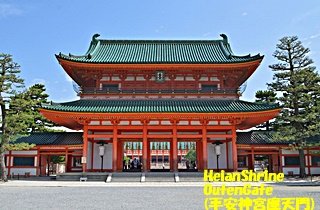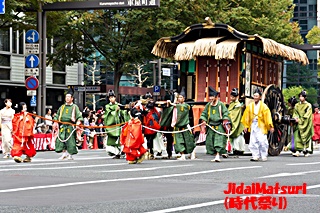Shrine in Kyoto-Japan (京都‐日本の神社):For anybody interested in Japan & its history/culture (019)
In the preivious posts about Kyoto, I did not cover shrines.
In this issue, I would like to write first Japanese shrines
in general and add several shrined in Kyoto.
先のポストで京都の神社を置き去りにしてあります。
今回は日本の神社一般の事を書き、その上で京都の神社に触れたい
と思っています。
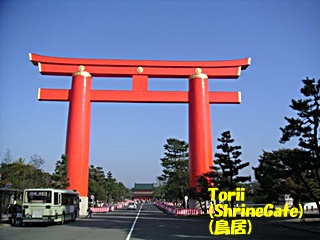
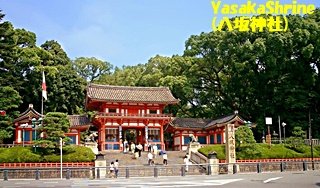
Throughout Japan the number of shrines is over 80,000.
Comparing the figure with that of post offices 24,000 and
that of elementary schools 22,000, you will realize that shrine in
Japan is everywhere near you, like a member of neighborhood.
The figures of each shrine group are not clear , but roughly
20,000~30,000 each of "Inari" headed by Fushimi Inari of Kyoto and
"Hachiman" whose head shrine is Usa Hachimanguu of Oita.
Inari must be originally to worship the god of rice but now the
god of commerce or economy in general. Hachiman is to worship
Oujin Emperor but it was involved in Daibutsu construction in Nara
Peirod showing early example of Shinto-Buddhism-Mix and also in
Heian Period on, got reverence of worriers as Gneji and Heike as
the god of fortunes of war.
日本には神社が全部で8万以上あるそうです。 全国の郵便局の数が
2.4万、小学校が2.2万に比べても、どこにでもあるという感じが
分かるかと思います。 神社の系列別の数字は明確ではないのです
が、大雑把に捉えて、京都の伏見稲荷が総本宮の”稲荷”系と大分
の宇佐八幡宮が本宮の”八幡”系が2~3万で多いのかと思われます。
”稲荷”は元々は稲の字が示すように、農業神で五穀豊穣を祈る対象
だったのかと思われますが、近代では経済、商売前半の繁栄を司る
とされているようです。 八幡神は応神天皇を祀るとされ、皇室の
祖神ともされているが、奈良時代の大仏建造にも関わったとされ、
神仏習合を古くから行っており、且つ源平からは武運の神として
崇敬を集めてもおります。
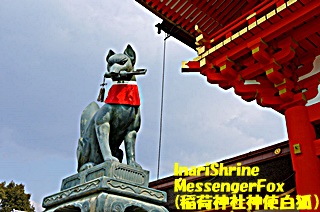
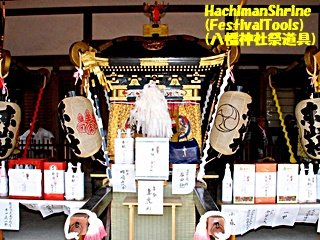
Other than those two groups, Tenmanguu of Sugawara Michizane or
referred to as Tenjinsya headed by Tenmanguu of Hakata is some
10,000 in Japan, being prayed for luck of entrance exam. and study
in general. Ise Jingu has a group of 5,000 shrines named ShinmeiSya
and other groups as Suwa, Kumano, Hiyoshi Shrine probably count
4,000~5,000.
この2つ以外では、博多の天満宮の菅原道真公の天満宮、或いは天神
社が、全国に1万程度あり、最近の受験・学業で祈りの対象となって
おり、その他伊勢神宮傘下の神明社が5千程度、諏訪・熊野・日吉‐
日枝神社系統が4~5千かと推測されます。
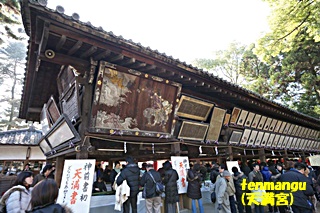
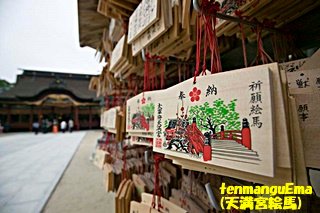
In Kyoto, Fushimi Inari is the grand head shrine of entire Inari
group proudly having the history of 1300 years. It is at the foot
of Inari mountain whose entire area is sanctuary and has Shinmei
Holy Water and line of magnificent vermillion buildings. Main hall
has width of 5 ken (between each pole is about 9 meters). Line of
1000 Torii (gateway simbol) lead you to the rear shrine.
京都では、南の伏見地区の伏見稲荷が、1300年の歴史を誇り、大社
として全国の稲荷神社をまとめている。 稲荷山の麓で、山全体を
神域とし、境内には稲荷神明水があり、朱塗りの社殿が建ち並び、
見る人を圧倒する。本殿は五間社流造りで室町期の建築物。
トンネルの様に続く千本鳥居は本殿から奥社へ続く。
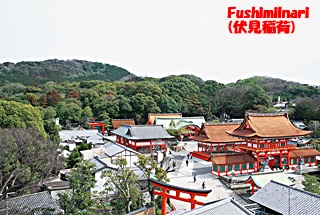
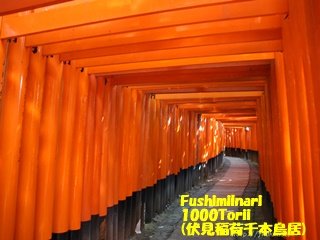
Regarding Hachiman Shrines group, the head shrine is located in
Hachiman city, south surburbs, though real head shrine is the one
in Kyusyu-Oita, "Usa Hachiman" whose deity was solicited to be at
Iwashimizu Hachiman in Heian Period and became the guardian of Heian
capital. Built in 860 by Seiwa Emperor and also revered by Genji
worriors as Takeda Imagawa, Ashikaga and Tokugawa for fortunes of
wars. Many hachimangu were followed from Iwashimizu as Tsuboi,
Tsuruoka and so forth in the history. The Festival of Iwashimizu
famous as "Iwashimizu Festival" in September is one of the three
Chokusai (Emperor send a messenger) Festival.
京都の八幡宮・八幡神社は、市内ではなく、八幡市にある石清水八幡宮
で、本殿含む10棟が国宝で、宇佐八幡等と共に三大八幡宮の一社で
宮中で四方拝で遥拝される一社でもある。 平安初期に宇佐八幡宮から
勧請され京都盆地南西の男山にに鎮座、延暦寺と共に京都南西の裏鬼門
を守護する神社として崇敬された。 創建は860年清和天皇によると
される。 9月15日の石清水祭りは三大勅祭りで、葵祭・春日祭と並び
称される。皇室の他、清和源氏の足利・徳川・今川・武田各氏に氏神と
して崇敬され、武運の神として、壺井八幡宮や鶴岡八幡宮他、数多くの
八幡宮に勧請された。
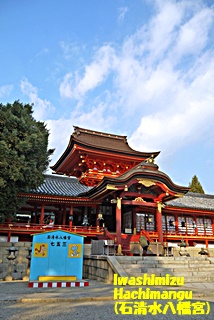
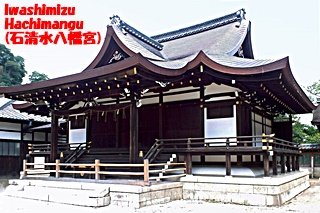
Kitano Tenmangu in KamiGyo-Ku is affectionately called as "Tenjin-san"
or "Kitano-san" by citizens, which is another center of Tenjin Worship
together with the Head Shrine of Dazaifu Tenmangu in Fukuoka. Nishiki
Tenmangu is originally built at the birth place of Sugawara Michizane.
上京区にある北野天満宮は、天神さん、北野さんと親しまれ、福岡の
大宰府天満宮と共に天神信仰の中心で、全国各地に当社から勧請が
行われている。錦天満宮は菅原道真公の生家跡に建てられたものです。
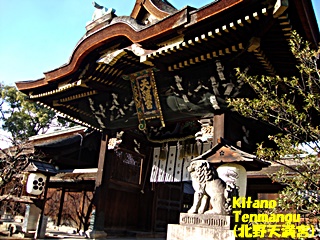
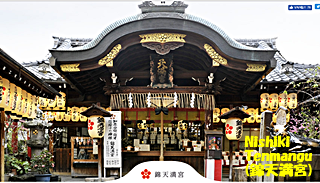
As above, Kyoto has Fushimi as the head shrine of "Inari group",
Iwashimizu though not in the city area, of head-rank shrine of "Hachiman
group" and Kitano and Nishiki Tenmangu.
In addition to those four shrines, Kyoto has very special World Heritage
and National Treasure shrines, namely "Kamo Shrine" and "Heian Shrine"
although they have no group.
以上、京都は日本の神社系列の第一位の稲荷で、”伏見稲荷”、第二位の
八幡系で、市内ではないですが、皇室も絡む”石清水八幡”、第三位の
天満宮系で ”北野天満宮”があります。
それ以外に京都には、世界遺産や国宝にも指定で、皇室も絡む、別格の
神社があります。 上賀茂・下鴨の”賀茂神社”と”平安神宮”です。
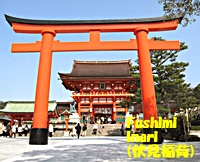
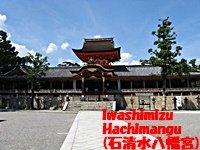
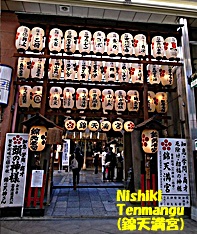
When you go up the Kamo river from the city center, you will hit the
dividing point of the river, one goes to east named Takano river and
another goes to west named kamo river. Shimogamo Shrine is located
at triangle land of dividing point and Kamigamo Shrine is on the north-
west of Shimogamo along the Kamo river.
鴨川を北上すると東の高野川と西の賀茂川に分岐します。 分岐点の
所にある下鴨神社は両方の川の間の三角地帯にあります。
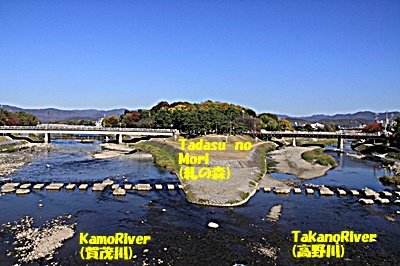
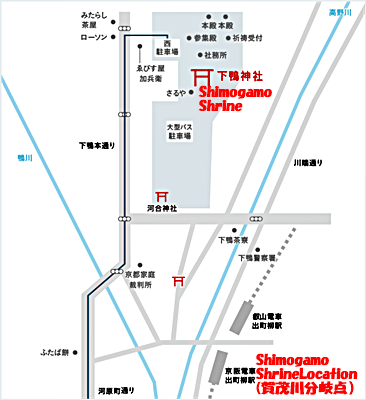
Both shrines are the oldest in Kyoto, probably before Nara Period,
built to worship the deity of Kamo clan in ancient time, which was
separated about 700 in Nara Period. Kamigamo Shrine worhips the
"WakeIkazuchi" deity while Shimogami worships his father and mother.
From the dividing point, you pass the south Torii(shrine gate), walking
straight to the main area including "Dance Stage", National Treasure
East and West Main Halls. You also pass woods area called "Tadasu
Woods", "Sazare Stone" and "Mitarashi River". Also there are "AioiSha"
famous for the matchmaking and "kawaiSha" for beauty.
元は賀茂社
という神社でしたが、700年頃に分離、上賀茂神社は別雷大神を祀り、
下鴨神社が祖神の別雷の両親を祀るとされている。 下鴨神社は合流点
から、南の鳥居をくぐり直線の参道を本殿まで行けます。 途中”糺の森”
や”さざれ石”、”みたらし池”があり、中央の”舞殿”、国宝の東西の
本殿等荘厳な建物が続きます。 それ以外にも縁結びの相生社や美人に
なる河合社もあります。
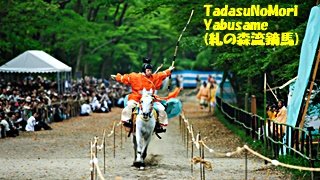
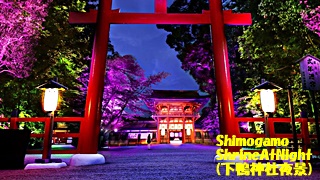
Kamigamo Shrine has the National Treasre of Main Hall and associate shrine
and many buildings designated as the Important Cultural Property.
Also it has "Mitarashi River" which is according to the legend, the water
TamayoriHime (Mother of WakeIkazuchi) took up white arrow fromp and bore
him.
上賀茂神社は賀茂川を少し遡った所にあり、国宝の本殿や重文の多数の
朱塗りの建物が並んでいます。境内にみたらし川が流れ、その川で母親が
白羽の矢を受け懐妊して別雷大神を生んだとされている。
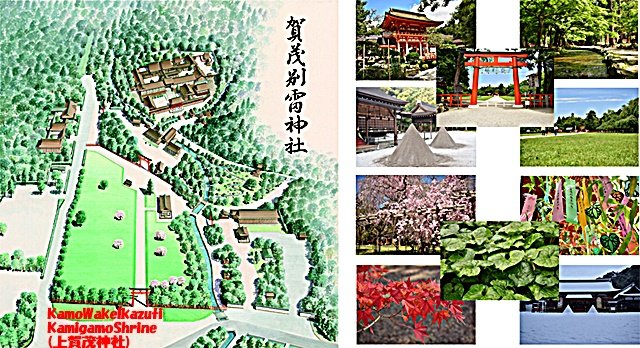
Heian Shrine was built in 1895 to celebrate 1100 anniversary of beginning
of Heian-Kyo and worship Kanmu Emperor and Koumei Emperor. the last Emperor
in Kyoto. Following the palace style of Heian Period, Council Hall, Ceremony
Hall plus White Tiger Tower and Blue Dragon tower were built.
Japanese style garden named Shin-En is at the east side of the Shrine and
also the front zone of the shrine is prepared as the Okazaki Park, including
museum, library,theater and so forth. In October every year, the Jidai Matsuri
(Era Festival) of the shrine is one of the three big festival of Kyoto.
平安神宮は遷都1100年記念として、桓武天皇と京都最後の天皇として孝明
天皇を祀り1895年に創建された。 平安の朝堂院や大極殿の他、白虎楼・
蒼龍楼等平安の様式を模したものとなっている。 他に庭園の平安神宮神苑と全体
が岡崎公園として整備されている。又毎年10月に開催される有名な時代祭り
は勅祭三大祭りの一つとなっている。

